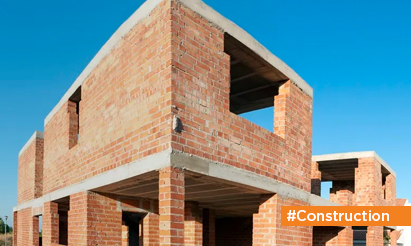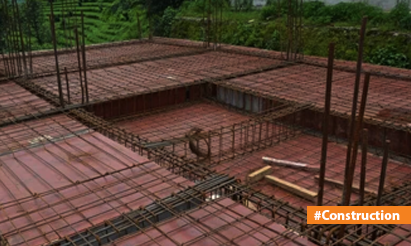Construction Guide: The Crucial Role of Cement-Sand Ratios in Plaster!
Plastering is a critical step in the construction and finishing of walls and ceilings. It not only enhances the aesthetics of a structure but also provides protection and durability. Choosing the right cement-sand ratio for plastering is essential to achieve a smooth, durable, and aesthetically pleasing surface. In this guide, we will explore the ideal cement-sand ratios for plastering external walls, internal walls, and ceilings to help you achieve the best results for your construction or renovation project.
1. Cement-Sand Ratio for External Wall Plastering:
External wall plastering serves as a protective layer against weather elements and structural damage. The cement-sand ratio for external wall plastering typically ranges from 1:4 to 1:6, depending on factors such as the type of surface, exposure to weather, and local climate conditions. Here are some considerations:
- 1:4 Ratio: Use this ratio for external walls exposed to severe weather conditions, such as heavy rainfall or extreme temperature variations. It provides better durability and resistance to cracking.
- 1:5 Ratio: This ratio is suitable for most external wall plastering applications. It strikes a balance between strength and workability, providing good protection against environmental factors.
- 1:6 Ratio: Choose this ratio for internal external walls with minimal exposure to harsh weather conditions. It offers better workability but may require more coats for a smooth finish.
2. Cement-Sand Ratio for Internal Wall Plastering:
Internal wall plastering focuses on creating a smooth and aesthetically pleasing surface. The ideal cement-sand ratio for internal walls typically ranges from 1:5 to 1:8, depending on the desired finish and the quality of the base surface. Here’s a breakdown:
- 1:5 Ratio: This ratio is suitable for plastering internal walls that require a polished or decorative finish. It offers excellent workability and a smoother surface.
- 1:6 Ratio: Use this ratio for standard internal wall plastering. It provides a good balance between workability and strength, making it suitable for most interior walls.
- 1:7 Ratio: Choose this ratio for rough plastering on internal walls where the finish doesn’t need to be exceptionally smooth. It’s cost-effective and can be used as a base for decorative finishes.
- 1:8 Ratio: This ratio is generally used for rough plastering, especially in areas where the finish will be concealed by paint, wallpaper, or other wall coverings.
3. Cement-Sand Ratio for Ceiling Plastering:
Ceiling plastering requires a different approach due to the vertical application. The ideal cement-sand ratio for ceiling plastering typically ranges from 1:3 to 1:5. Here’s what you need to know:
- 1:3 Ratio: This ratio is suitable for ceiling plastering when a smooth, fine finish is desired. It offers excellent workability but may require more skill during application.
- 1:4 Ratio: A common choice for ceiling plastering, this ratio balances strength and workability. It provides a good surface finish and is easier to work with than the 1:3 ratio.
- 1:5 Ratio: Use this ratio for ceiling plastering when a coarser finish is acceptable, such as in utility areas or spaces with concealed ceilings.
Conclusion
Selecting the right cement-sand ratio for plastering external walls, internal walls, and ceilings is crucial to achieve the desired finish and durability. Consider factors like weather exposure, desired surface finish, and the specific requirements of your project when making your choice. Always follow local building codes and consult with a construction professional if you have any doubts about the appropriate ratio for your plastering job. Properly executed plastering enhances the overall look and longevity of your walls and ceilings, ensuring they stand the test of time.
Disclaimer: The views expressed above are for informational purposes only based on industry reports and related news stories. PropertyPistol does not guarantee the accuracy, completeness, or reliability of the information and shall not be held responsible for any action taken based on the published information.




